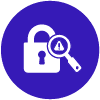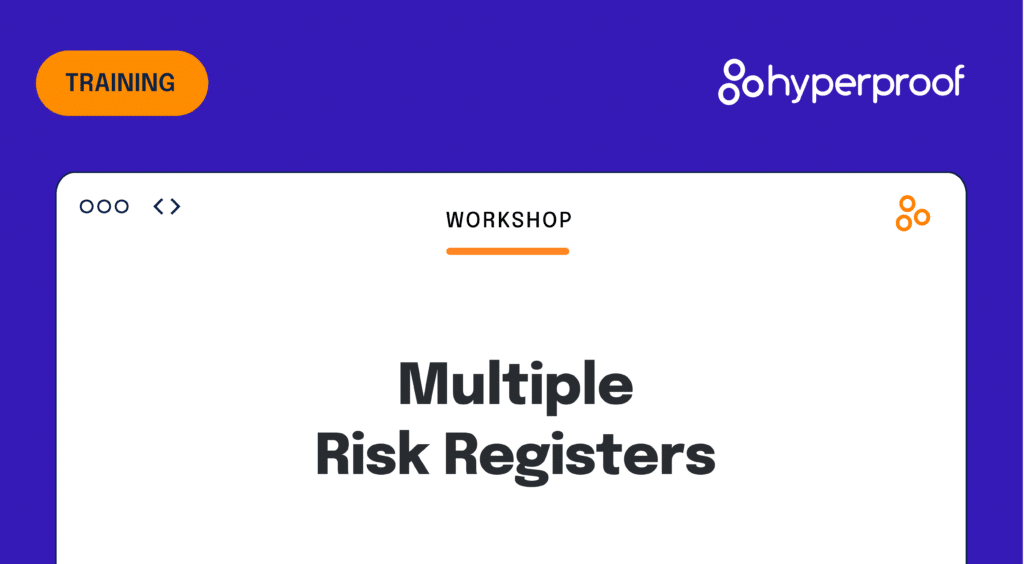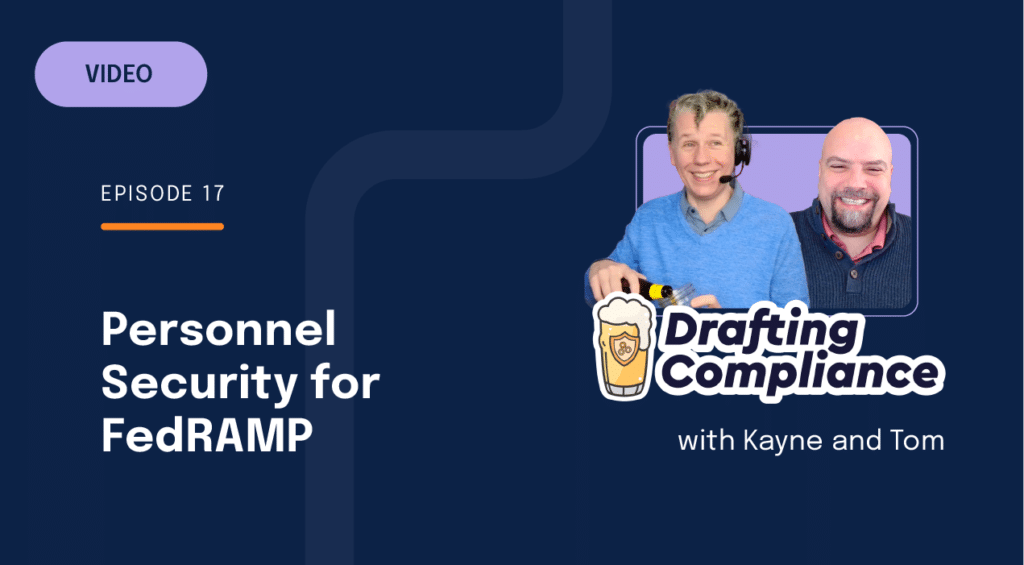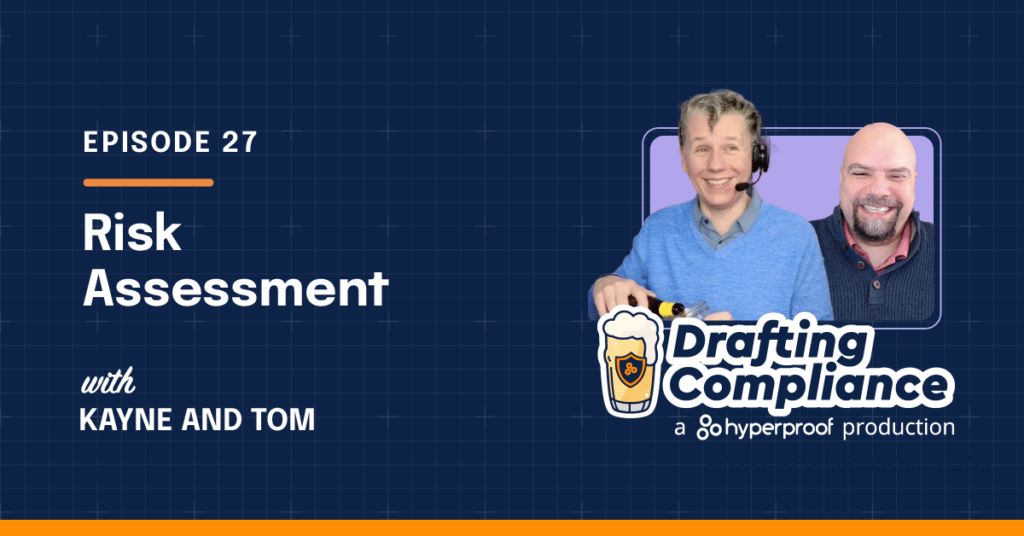Security Compliance 101: What It Is and How to Master It

Talk to any compliance officer today, and they will all agree that modern security compliance — fulfilling your organization’s regulatory obligations to keep data safe, secure, and intact — must be a top priority for every business.
But what, exactly, does that mean? How can compliance officers determine their security compliance risks and the appropriate controls to implement so those risks are kept at acceptable levels?
Those two questions (and the many more questions that they spawn) can overwhelm any compliance officer. This article provides an overview of the answers. We aim to give you a clear understanding of what security compliance entails, how to explain its importance to others, the best practices everyone should try to implement, and how you can get started quickly and easily.
With that, let’s get started ourselves.
What is security compliance?

A dictionary definition of security compliance would be this: security compliance is the set of controls and practices a business implements to meet regulatory obligations, industry standards, and internal policies for safeguarding sensitive data, protecting IT assets, and reducing information security risk.
Alternatively, we could look at things from a management perspective and frame it this way: security compliance is a disciplined, systemic approach to assuring that your operations, systems, and processes meet security criteria defined by regulators or established cybersecurity frameworks.
These are nice definitions, but what do they mean in practice? What does security compliance actually entail daily? Let’s unpack security compliance into several primary components to answer those questions.

Regulatory compliance
Regulatory compliance is exactly what the name suggests: you must comply with certain regulations that govern data privacy or cybersecurity. Examples include the EU General Data Protection Regulation (GDPR), The Health Insurance Portability and Accountability Act (HIPAA), and ISO 27001. All include specific, exacting requirements for risk assessments, testing, encryption, and more.
Companies have no choice but to build security compliance programs that can meet their regulatory obligations. If you don’t, regulators might swoop in with monetary penalties, onerous compliance reforms, and reporting obligations you’ll need to meet.

Industry standards
Aside from regulatory requirements, industries often develop best practices and standards to address common security challenges — and if you’re in those industries, you’ll need to develop a way to comply with those standards, too. Examples include NIST SP 800-161, which guides organizations on identifying, assessing, and mitigating cyber supply chain risks at all levels of their organization and PCI DSS, the retail industry’s standard to protect credit card data.

Internal policies and procedures
Businesses also have internal security policies and procedures tailored to their unique needs and risks. For example, you might have a policy that requires all unnecessary files to be deleted after three years or that all employees must undergo security training twice a year. Compliance with internal policies assures that employee behavior is consistent across the enterprise and aligns with your business objectives.

Risk management
Risk management is a cornerstone of security compliance. At regular intervals (annually, for example), you should assess the risks facing your business that might arise from external threats (hackers) or internal vulnerabilities (outdated software). Risk assessments should identify your critical IT assets, evaluate the likelihood and severity of potential threats, and implement controls to bring those risks to an acceptable level.

Auditing and monitoring
Once your risks are assessed and controls implemented, you must then monitor the performance of those controls to be sure that your security compliance program works over time. Audits can also verify your compliance with frameworks for GDPR or PCI DSS compliance. Audits detect deviations or security incidents, and identify areas for improvement. The audits themselves can be conducted internally or with external assessors.

Documentation and reporting
You need to maintain comprehensive documentation of your security policies, procedures, risk assessments, and compliance activities; it’s crucial to demonstrate your compliance to regulators, auditors, and any other stakeholders. Reporting processes provide transparency and accountability on your security posture and compliance status.
As you can see, security compliance is a complicated endeavor, with multiple parts operating together. Your compliance program needs to orchestrate all the above components holistically and deliberately so that your IT assets and confidential data are protected and your stakeholders trust your business!
The critical importance of security compliance

Security compliance is important to every business for a host of reasons.
First, as we mentioned earlier, many of your compliance obligations are required by law. You can’t not obey them without inviting serious (read: expensive) legal consequences. You have to do it.
Second, security compliance is also a smart business. Ransomware attacks can leave your business paralyzed and hemorrhaging money; hackers can poach valuable intellectual property, post it online, and render it worthless. By implementing security controls and best practices outlined in compliance frameworks, you can reduce those threats, strengthen your resilience, and position your business to respond more effectively to emerging threats.
Third, security compliance enhances trust and credibility with your customers, business partners, and stakeholders. When you operate at a high level of security (thanks to strong security compliance) that tells others that your business takes security seriously and is committed to protecting their interests. That, in turn, can lead to stronger relationships, increased customer loyalty, and a competitive advantage in the marketplace.
Overall, security compliance fosters a culture of continuous improvement in your enterprise, which is predicated on a culture of accountability. These are good things. They attract better employees and lead to better performance.
Or, more prosaically, Regular audits, monitoring, and compliance assessments encourage continuous evaluation and improvement of your security measures. This iterative approach allows your organization to stay ahead of evolving threats and to maintain a strong security posture even in today’s chaotic IT environment. That’s a good thing, too.
Best practices for security compliance

We can define security compliance as a set of fundamental components described above. We can also define it as a set of standard practices — best practices, really — that your team will need to implement. Here are six of them.

Perform regular security audits and assessments
You’ll need to perform these audits and assessments often, such as once a year or after any significant organizational change such as a merger or IT overhaul. These assessments should look at all IT systems, networks, and processes, and they should include both technical steps (such as penetration testing) and procedural ones (policy compliance checks).

Implement strong access controls
Enforce strict access controls so only authorized individuals can access sensitive data and systems. This can include implementing multi-factor authentication, role-based access control, and the principle of least privilege.

Encrypt your data
Straightforward, but often overlooked! Encrypt sensitive data whether it’s in transit or at rest, and be sure that encryption keys are properly managed and rotated regularly.
Train your employees. Provide regular training and awareness programs to educate employees about security best practices, typical threats (e.g., phishing attacks), and their duty to help maintain security compliance.

Develop an incident response plan
Have a written plan for how to respond to a cybersecurity incident. That plan should explain which teams take what steps, how senior executives should communicate with each other, and when to notify regulators, business partners, and other stakeholders. Test your plan with table-top exercises to find holes and then fill them.

Implement patch management
Implement a software patch management program so that all your applications, operating systems, and other firmware are updated as necessary with the latest security patches and updates. This seals up known vulnerabilities in your IT systems and reduces the risk of hackers cracking your security.

Manage your security configurations
Maintain secure configurations for your entire IT environment, from systems to applications to personal devices employees might be using. This also means turning off unnecessary services, removing default accounts and passwords, and “hardening” any standard configurations from your vendor to meet your specific risk profile.
8 practical tips on how to get started with security compliance

So far we’ve talked about capabilities or best practices that a security compliance team needs to develop. That can be an arduous journey. So now let’s shift gears to focus more on you, the chief information security officer. What do you need to do or know, to get started on that journey to strong security compliance?
1. Understand the regulatory landscape
Familiarize yourself with the regulations, industry standards, or contractual obligations that apply to your business. That might include privacy regulations such as GDPR, HIPAA, or PCI DSS. It can also include security standards such as ISO 27001 or any number of NIST frameworks. Figure out which ones are mandatory, which ones are voluntary but relevant, and which ones are likely to become more important in coming years (such as artificial intelligence frameworks).
2. Assess your organizations current state of security compliance
Conduct a wide-ranging assessment of your policies, procedures, technical controls, and organizational culture. Identify gaps between that current state, and the ideal state you want to achieve based on what you learn from the previous step.
3. Define your compliance objectives and priorities
Based on what you find from your assessment, identify your most important compliance objectives. Determine which issues are most critical (whether they are huge regulatory risks or glaring security weaknesses) and, therefore, need immediate action.
4. Assemble the right team to address your issues
This will usually be a cross-disciplinary team, with people from IT security, legal, finance, HR, and possibly other departments. They will need to collaborate on designing and implementing the best solutions for a strong compliance program. You will need to lead them.
5. Implement those solutions as necessary
Sometimes the solution will be to develop new policies and procedures, such as for incident response plans or employee training. Other times you might need to implement technical controls such as encryption or multi-factor authentication. Whatever the specifics might be, implement those solutions in a prompt, disciplined manner. (And yes, you might need a GRC tool to guide you through this effort.)
6. Implement monitoring and reporting mechanisms
Once your improved controls are in place, you’ll need to monitor their performance — including employees’ compliance with the measures you’ve adopted. Develop reporting mechanisms so that you can see and understand your company’s compliance status and bring areas of concern to senior management.
7. Provide ongoing training and awareness
You need to educate all employees — and potentially even third parties, such as contract labor or joint-venture partners — on the role they’ll need to play in assuring strong security compliance. That might include specific training courses, pep talks from senior executives, drills on security incidents, and tests (fake phishing attacks, for example) so that the message seeps in, and a strong culture of compliance flourishes.
8. Repeat
Once you go through all the above steps, start all over again with a fresh assessment of your regulatory landscape and compliance posture. Then proceed through the subsequent steps in turn.
Understanding security compliance with Hyperproof: a continuous process, not a one-time sprint

That’s our final message about security compliance: that it is a process, repeating over and over again, rather than a final destination. You will never reach any “final triumph” over cybersecurity, where everything is configured just right, and your security risks vanish forever. That’s not the way it works.
Strong security compliance is a state of being you want to achieve to weather the challenges from regulators, hackers, business partners, new technologies, and more. As we’ve highlighted, security compliance is an evolving process that necessitates diligence, adaptability, and a proactive stance toward threats and regulations. Recognizing this continuous cycle can be challenging, but you don’t have to navigate it alone.
Hyperproof offers a comprehensive solution that simplifies compliance efforts, enhances security measures, and keeps you one step ahead. See how well you can transform your approach to security compliance by requesting a demo today. Let Hyperproof be your partner in this ongoing journey and help you achieve and maintain the state of strong security compliance.
See Hyperproof in Action
Related Resources
Ready to see
Hyperproof in action?












